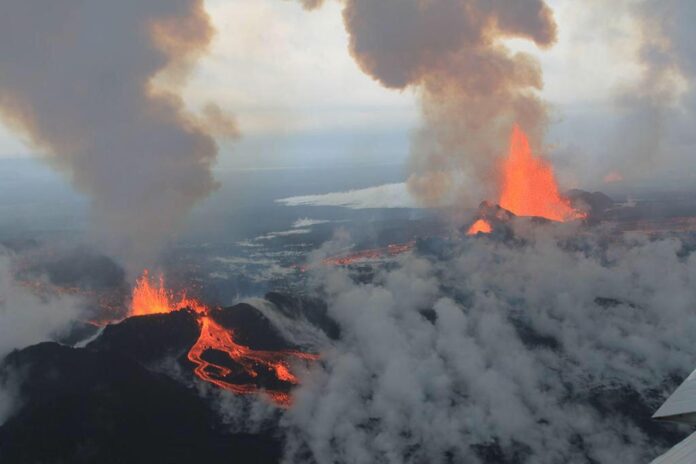
An eruption of an Icelandic volcano threatens to disrupt travel in Europe. Credit: Chematierranews, Twitter.
One of the largest volcanoes in all of Iceland, Vároarbunga, experienced 130 earthquakes in just five hours that shattered the ground around it, raising concerns that a full-scale eruption could seriously impact flights. people feel.
Iceland has unfortunately experienced many violent volcanic eruptions, the most recent and most famous of which occurred in 2010. The Eyjafjallajökull eruption caused around 20 countries to completely close their airspace to travelers, affecting 10 million passengers who were trying to fly to and from Europe, and 100,000. Flights were canceled and airport operations were suspended, resulting in a loss of $80 million.
Aviation code turns yellow as fears of impending earthquake-induced eruption grow
Now, experts say the aviation color code (a signal that warns pilots about volcanic ash and other debris in the sky) has been set to yellow in Barro Albunga, creating a new, albeit much smaller, travel threat. I am concerned that this is approaching. .
The volcano lies beneath Vatnajökull, Iceland’s largest ice sheet, and last erupted 10 years ago.
According to the U.S. Geological Survey (USGS), earthquakes of magnitude 6 or higher can cause eruptions, and central Iceland has experienced a number of magnitude 5 earthquakes, shaking nearby areas and disrupting both citizens and tourists. I’m worried that my trip will be disrupted. If an eruption were to occur here, there is a possibility.
Valentin Troll, a professor of petrology and geochemistry at Sweden’s Uppsala University, said: “The Ballo Albunga unrest is a sign that the long-term inflation of the system over the past few years will be further accelerated and the development towards a new eruption. It could happen,” he told the Daily Mail.
Why do volcanoes erupt?
If a nearby plate shaken by an earthquake deposits enough magma into a volcanic system and exerts significant pressure within its storage area, the volcano can actually erupt. “If these conditions exist, large plates can release dissolved gases from the magma (like when you shake a soda bottle), increasing pressure and potentially leading to an eruption,” the USGS said. are.
In addition to Eyjafjallajökull in 2010, Iceland is home to several other destructive volcanoes. In 2011, a volcano beneath the Vatnajökull glacier, which is also the same as Varroarbunga glacier, erupted, causing the cancellation of 900 flights across Europe in a short period of time.
Ten years ago, Iceland experienced the largest eruption of the Vallarbunga volcano in more than 200 years, but only local tourism was affected.
Therefore, while the threat of travel terror looms, the public can be confident that this particular potential eruption does not pose a major risk to airports and flights across Europe.
Find the latest news from across Europe here.
















